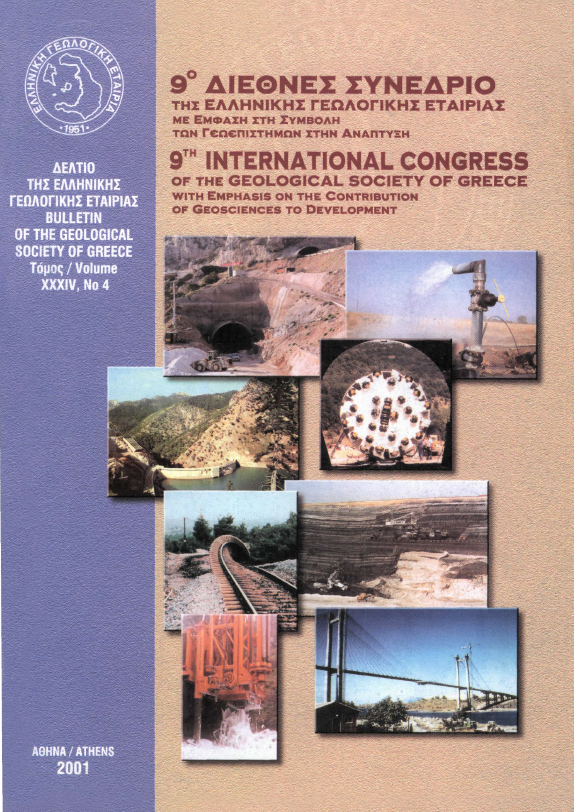Nondestructive 2-D geoelectrical surveying into a building's basement

Abstract
In this paper the application of flat base electrodes into a building's basement is examined. The aim of this study was to locate ancient walls possibly situated underneath a building, lying on Ag. Dimitriou road in Thessaloniki (Greece). During ERT surveying, an archaeological excavation took place on the roadway outside the building. The excavation revealed ancient walls. A number of resistivity profiles were carried out on the concrete floor of the building. The dipole-dipole array was used in some sections, while in others the Wenner array was undertaken. The spacing "a" between electrodes was Im and the maximum N-separation of Nmax=8. In order to perform resistivity profiles in a nondestructive manner on the concrete floor, flat base electrodes were applied. The resistivity surveying indicated the existence of linear structures identified as resistive bodies. These anomalies may have been derived from various causes, but most likely they may have been derived from the continuation of the ancient walls revealed from the archaeological excavation on the roadway. Finally, it must be noted that flat base electrodes proved to be an efficient tool for measuring indoors.
Article Details
- How to Cite
-
Athanasiou, E., Tsourlos, P., Vargemezis, G., & Tsokas, G. (2007). Nondestructive 2-D geoelectrical surveying into a building’s basement. Bulletin of the Geological Society of Greece, 40(3), 1045–1054. https://doi.org/10.12681/bgsg.16796
- Section
- Geophysics and Seismology

This work is licensed under a Creative Commons Attribution-NonCommercial 4.0 International License.
Authors who publish with this journal agree to the following terms:
Authors retain copyright and grant the journal right of first publication with the work simultaneously licensed under a Creative Commons Attribution Non-Commercial License that allows others to share the work with an acknowledgement of the work's authorship and initial publication in this journal.
Authors are able to enter into separate, additional contractual arrangements for the non-exclusive distribution of the journal's published version of the work (e.g. post it to an institutional repository or publish it in a book), with an acknowledgement of its initial publication in this journal. Authors are permitted and encouraged to post their work online (preferably in institutional repositories or on their website) prior to and during the submission process, as it can lead to productive exchanges, as well as earlier and greater citation of published work.









